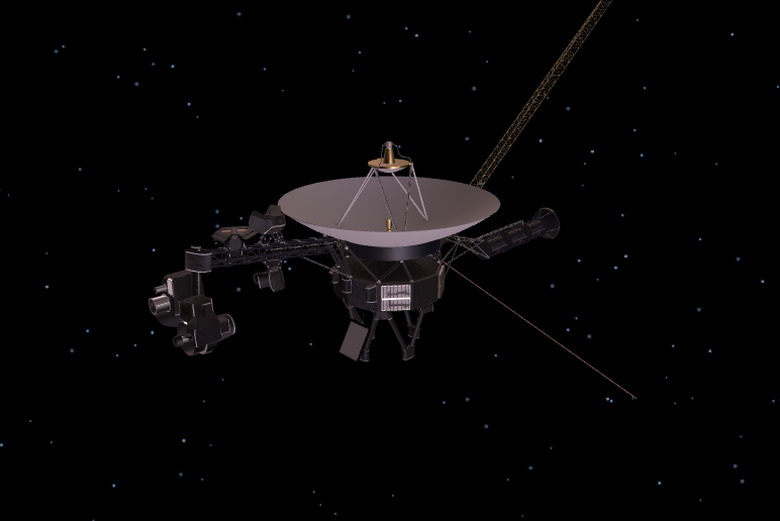Voyager 2 Escaped The Solar System, And It's Telling NASA The Secrets Of Interstellar Space
NASA launched the Voyager 2 space probe in August of 1977. It's since spent nearly four decades making its way out of the massive bubble called the heliosphere which is generated by the Sun and contains our entire Solar System. It accomplished that feat roughly a year ago, traveling into interstellar space and leaving our system for good.
This week, several new research papers were been published using data sent back by Voyager 2, and they reveal some interesting things about the border between our solar neighborhood and the vast expanse of interstellar space.
A few of the more interesting notes include observations of plasma in interstellar space and the fact that it's much denser than plasma within the heliosphere. That makes sense since it's mighty cold in interstellar space, and it's something that Voyager 1 observed when it began to exit the heliosphere back in 2012 as well.
Once Voyager 2 had left the heliosphere, scientists expected a dramatic drop in the number of charged particles it detected. This proved to be the case for Voyager 1, but things weren't the same for its twin, and it seems the region where Voyager 2 exited is "leaky." Voyager 2 observed some of the particles that are typically confined to the heliosphere escaping, trickling out into interstellar space.
"The Voyager probes are showing us how our Sun interacts with the stuff that fills most of the space between stars in the Milky Way galaxy," Voyager project scientist Ed Stone said in a statement. "Without this new data from Voyager 2, we wouldn't know if what we were seeing with Voyager 1 was characteristic of the entire heliosphere or specific just to the location and time when it crossed."
It's borderline miraculous that a piece of technology that spent decades in space is still in one piece, much less functional, but here we are, and NASA's trusty little probes are still doing work.
